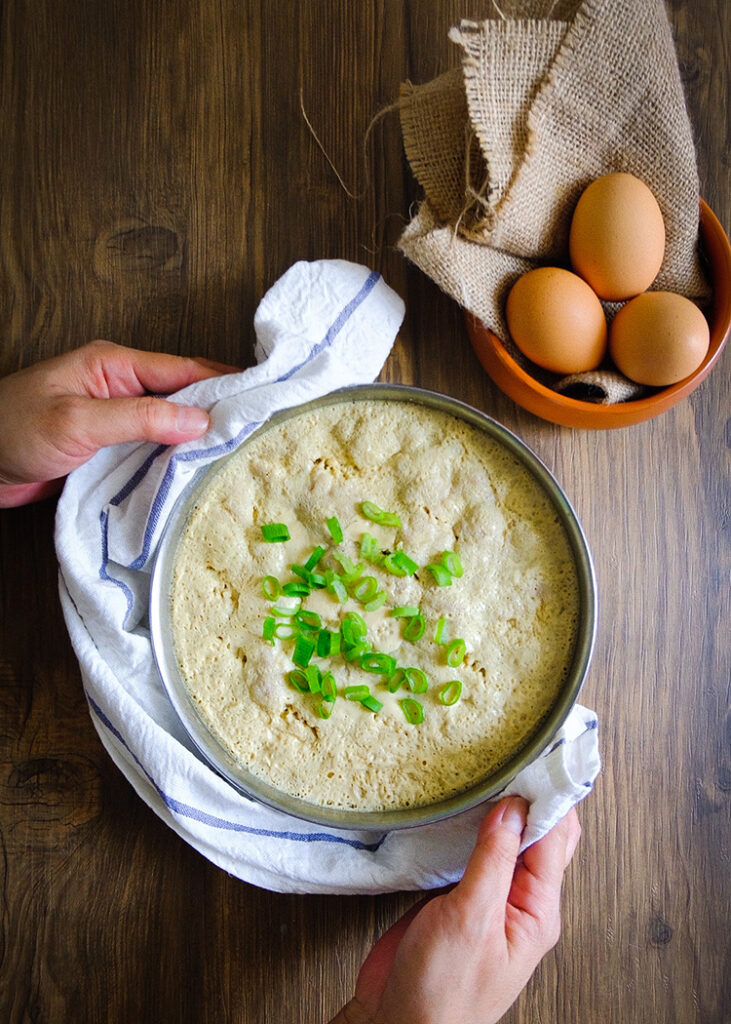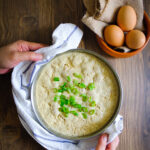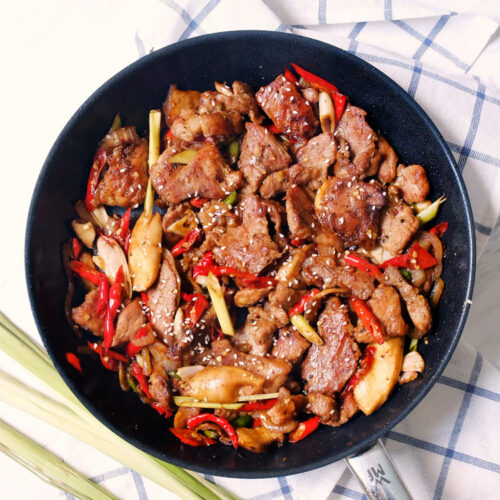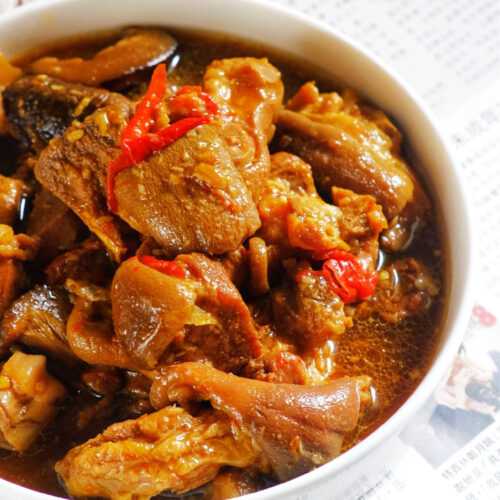
Ah, another Medanese Hakka style pork dish! This one is an all-time favourite for me and my siblings. This pork meatloaf is one of the most simple and yet delicious delicacies that my family has! In the Hakka dialect, we called this pork meatloaf is Nyuk Piang. The best Asian meatloaf!
Jump to RecipeIn my own understanding, Nyuk means meat, and Piang means loaf or pan. As for sound and pronunciation is similar to the Chinese word ‘Biang’. I am definitely not an expert in the Hakka dialect but I think that’s the closest explanation on the names we knew growing up in the Hakka’s household.
I was googling Nyuk Piang and other similar recipes came up. But everyone grew up with a different kind of Nyuk Piang. Most of the recipe I saw was using fermented and pickled vegetables which you can find in China province like Lin An, Hangzhou. Also, most Hakka people that grew up outside Medan like Pontianak would be familiar with that dish.
One of the most important parts of this recipe is to not use store-bought minced pork. Because it would be too soft and watery. The best is to get fillet and manually mince it with chopped garlic so the flavour of the garlic would soak into the meat.
If you don’t have an aluminium pan (like the one I used on the photo), a ceramic pan would do the work just fine! As long the container/the bowl is heat-proof, this pork meatloaf (Nyuk Piang) would be good to go!
Hakka Style Pork Meatloaf (Nyuk Piang)
Equipment
- Steamer
- Aluminium Tin Pan
Ingredients
- 300 gram Pork Leg
- 3 cloves Garlic chopped
- 2 pieces Egg beaten
- 100 ml Water to adjust
- 2 tsp Mushroom Stock
- 2 tsp Soy Sauce
Instructions
- First thing first, prepare the cutting board and knife to manually mince the pork meat along with the chopped garlic. Transfer it to the aluminum pan. Set aside.
- Beat 2 eggs and fill it with water, mushroom stock, and soy sauce.
- Then pour the eggs mix to the aluminium pan with freshly minced pork. Mix well.
- Place it in the steamer. Steam it for about 20-30 minutes on high heat.
How to check if the meat has cooked through? Grab a toothpick and poke in the middle. If it’s firm, it has cooked through! You can also see the surface has started to firm up and less watery.
To adjust the saltiness, you could add more soy sauce after. For garnish, our family never uses any garnish. Especially because my dad and brother hated spring onion. However, for this food photography to be photogenic, spring onion was added. The original flavour tastes so much better without garnish!
Leave me a comment for any question! Best of luck!



